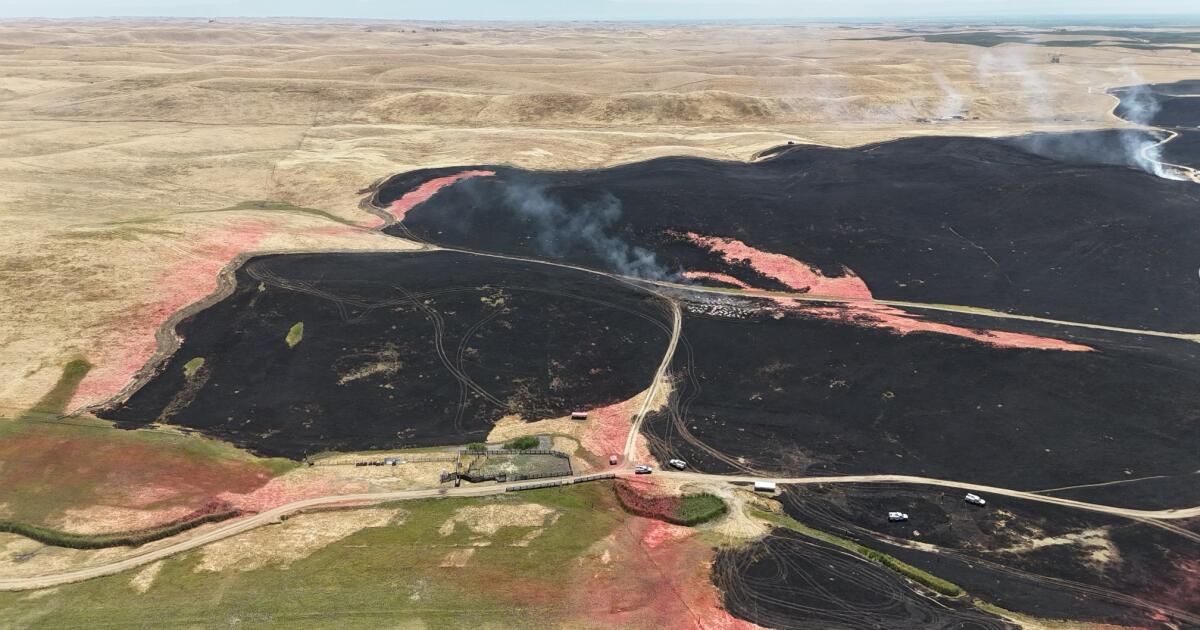Within the early hours of Friday morning, a brush fireplace ignited in Kern County, demanding instant consideration from firefighting groups. Dubbed the Sherwood Fireplace, the outbreak commenced round 10:15 a.m. close to Sherwood Avenue and Famoso-Woody Street. This location, located east of Freeway 65 and north of the bustling metropolis of Bakersfield, swiftly turned the focus of an intensive firefighting operation.
In keeping with Cal Fireplace, by the afternoon of the identical day, containment efforts had seen some success, with 20% of the hearth underneath management. Nevertheless, the hearth had expanded throughout 373 acres of land, highlighting the virulent nature of the blaze. The depth of the scenario escalated with the issuance of an evacuation warning, focusing on residents north of Famoso Street and Famoso-Woody Street, and people dwelling south of Garces Freeway, east of Porterville Freeway, and west of Bakersfield-Glennville Street.
Jon Drucker, the Public Data Officer for the Kern County Fireplace Division, shared insights into the conduct of the hearth. The Sherwood Fireplace ravaged by way of dry grass and undulating hills, propelled by winds that dictated its average fee of unfold. The presence of a number of properties within the fireplace’s trajectory added a layer of urgency, with at the least one residence recognized as being in instant hazard. Firefighting groups had been deployed to this home, endeavor protecting measures to thwart the hearth’s advance.
The efforts of those firefighters bore fruit, as Drucker confirmed that the hearth was efficiently halted earlier than it may inflict any injury on the home. The firefighting technique included a vigilance plan for the night time, concentrating on smoldering sections inside the fireplace’s already burnt areas, colloquially referred to as the black zone. Crews dedicated to a night-long vigil, guaranteeing the embers didn’t reignite right into a extra vital risk.
Help from the skies was essential in these endeavors, with aerial help offered by a aircraft from Porterville, as described by Nationwide Climate Service meteorologist Carlos Molina. The native climate performed a pivotal half, with mid-70s temperatures and northwest winds at 10 to 12 mph contributing to firefighting efforts. Nevertheless, Molina warned of accelerating temperatures and reducing humidity over the weekend, doubtlessly complicating containment efforts.
With a forecast that hinted at a more difficult firefighting setting, Molina emphasised the significance of adherence to evacuation orders. Such preemptive actions not solely guarantee resident security but in addition streamline operational effectivity for firefighters, liberating them to focus on combating the blaze fairly than diverting sources to rescue missions.
The unfolding scenario in Kern County serves as a stark reminder of the unpredictability and harmful potential of brush fires. It underscores the vital significance of immediate and coordinated response efforts by firefighting groups, the very important function of group cooperation throughout evacuations, and the necessity for fixed vigilance in fire-prone areas, particularly underneath adversarial climate situations.
















